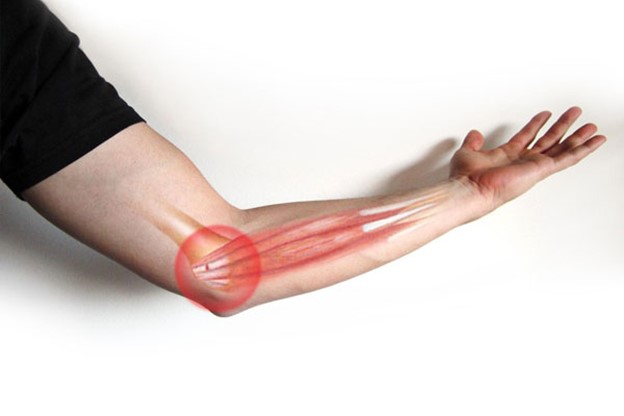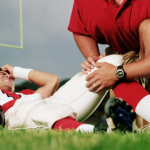Golfer’s elbow, or medial epicondylitis, causes pain along the inner side of the elbow where the forearm tendons attach. The condition affects more than just golfers. People involved in repetitive gripping, lifting, or wrist flexion, such as manual workers, weightlifters, or those performing daily repetitive tasks, often develop symptoms. Adults aged 40 to 60 are commonly affected, though it can occur at any age.

How Golfer’s Elbow Develops
The forearm muscles responsible for bending the wrist and rotating the forearm anchor at the medial epicondyle. Repeated or forceful use of these muscles can strain the tendon attachment, leading to small tears and inflammation. Continued overuse worsens the damage, resulting in persistent discomfort.
Symptoms of Golfer’s Elbow
The condition typically presents with:
- Pain and tenderness on the inner elbow;
- Discomfort during gripping, lifting, or wrist bending;
- Reduced grip strength;
- Stiffness and limited movement in the elbow;
- Occasionally, tingling or numbness in the forearm or fingers.
The discomfort often worsens with repeated use of the affected arm.
Causes and Contributing Factors
Repetitive wrist and forearm activity remains the primary cause. Contributing factors include:
- Sports such as golf, tennis, or weightlifting involve repetitive gripping and wrist flexion, stressing the forearm tendons;
- Manual work requiring repeated hand or wrist movements, such as carpentry or assembly work, places ongoing strain on the same muscles;
- Poor technique during sports or occupational tasks increases tendon load with each movement;
- Sudden increases in activity intensity adding too much workload too quickly without proper conditioning raises injury risk;
- Tendon degeneration associated with ageing natural wear weakens tendon fibres, making them more vulnerable.
Daily activities that involve gripping or carrying can also trigger the condition in non-athletes.
Diagnosis of Golfer’s Elbow
Diagnosis relies on physical examination. The doctor evaluates tenderness around the medial epicondyle, tests wrist, and finger strength, and checks elbow mobility. X-rays may be performed to rule out bone problems; MRI is sometimes used to assess tendon damage or exclude other conditions.
Treatment for Golfer’s Elbow
Most cases respond to non-surgical care:
- Activity modification: Limiting tasks that aggravate the elbow allows tendon healing;
- Ice therapy: Helps reduce inflammation;
- Medications: Nonsteroidal anti-inflammatory drugs (NSAIDs) relieve pain and swelling;
- Physical therapy: Exercises strengthen and stretch the forearm muscles;
- Bracing: Counterforce straps may reduce tendon strain.
Persistent cases may require:
- Corticosteroid injections: Provide temporary pain relief;
- Advanced therapies: Platelet-rich plasma (PRP) injections, shockwave therapy (ESWT), or manual therapy have shown benefits when standard treatment fails.
Surgery is an option when symptoms continue despite prolonged non-operative management. The procedure removes damaged tendon tissue and repairs the affected area, often using minimally invasive techniques.
Rehabilitation and Prevention
Rehabilitation aims to rebuild forearm and shoulder strength while improving flexibility. Exercises improve tendon durability and reduce strain during everyday use. Preventive measures include:
- Correcting technique during sport or work;
- Adjusting equipment to minimise load on the forearm;
- Gradually increasing workload;
- Maintaining regular stretching and strengthening routines.
Conclusion
Golfer’s elbow develops from repetitive stress on the forearm tendons. With appropriate treatment—rest, physical therapy, and rehabilitation, most individuals recover without surgery and return to their usual activities. Early attention to symptoms prevents long-standing problems and supports better recovery.
For enquiries and online appointments, send a message to www.DrAyyappanVNair.com/contact
For informative videos related to Shoulder problems and their treatment options, Sports Injuries and other orthopedic conditions, visit our YouTube channel Bangalore Shoulder Institute – https://www.youtube.com/@BangaloreShoulderInstitute

